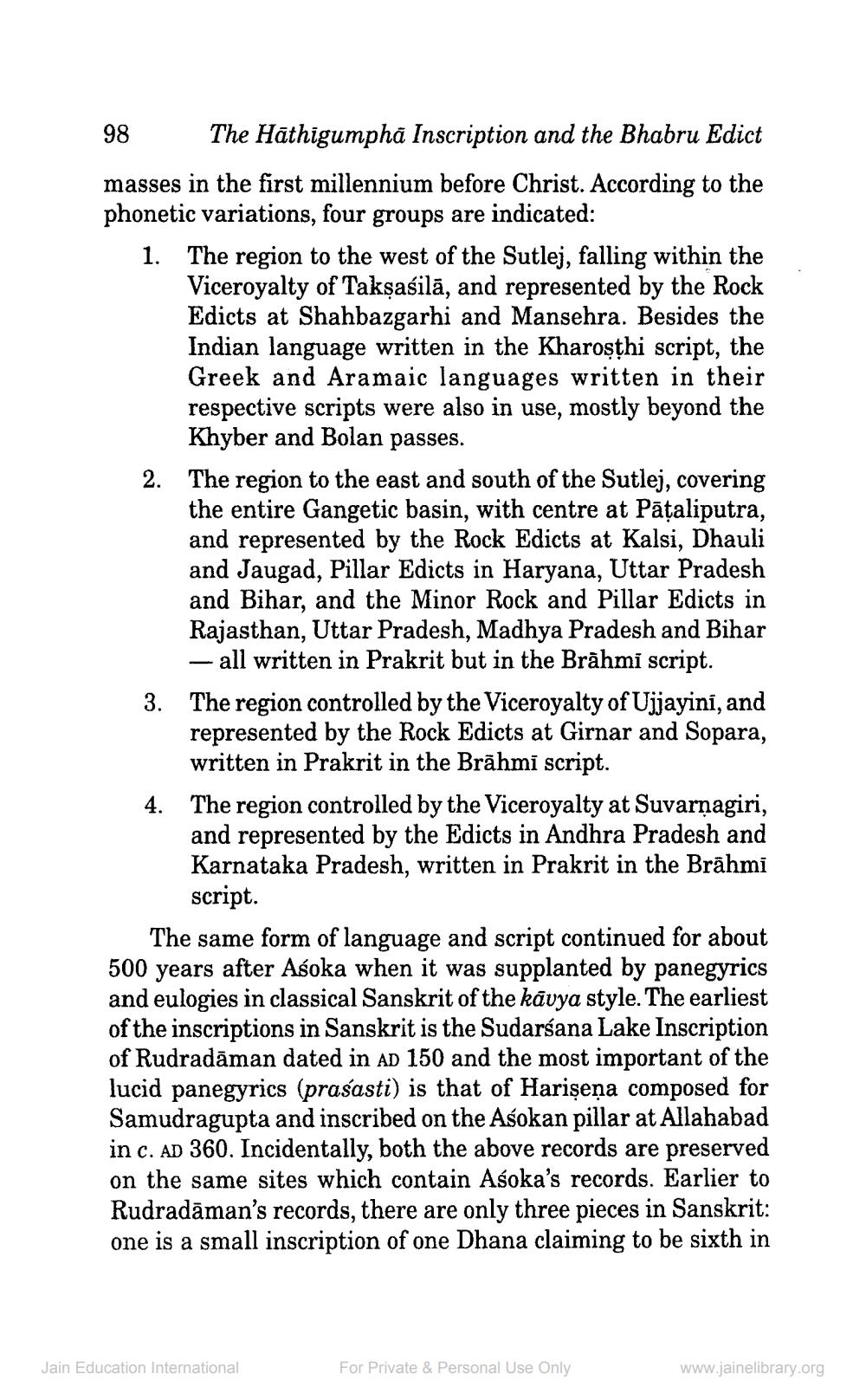________________
98
The Hathigumpha Inscription and the Bhabru Edict
masses in the first millennium before Christ. According to the phonetic variations, four groups are indicated:
1. The region to the west of the Sutlej, falling within the Viceroyalty of Takṣasila, and represented by the Rock Edicts at Shahbazgarhi and Mansehra. Besides the Indian language written in the Kharoṣṭhi script, the Greek and Aramaic languages written in their respective scripts were also in use, mostly beyond the Khyber and Bolan passes.
2. The region to the east and south of the Sutlej, covering the entire Gangetic basin, with centre at Pāțaliputra, and represented by the Rock Edicts at Kalsi, Dhauli and Jaugad, Pillar Edicts in Haryana, Uttar Pradesh and Bihar, and the Minor Rock and Pillar Edicts in Rajasthan, Uttar Pradesh, Madhya Pradesh and Bihar - all written in Prakrit but in the Brahmi script.
――――
3. The region controlled by the Viceroyalty of Ujjayini, and represented by the Rock Edicts at Girnar and Sopara, written in Prakrit in the Brahmi script.
4.
The region controlled by the Viceroyalty at Suvarnagiri, and represented by the Edicts in Andhra Pradesh and Karnataka Pradesh, written in Prakrit in the Brahmi script.
The same form of language and script continued for about 500 years after Aśoka when it was supplanted by panegyrics and eulogies in classical Sanskrit of the kavya style. The earliest of the inscriptions in Sanskrit is the Sudarsana Lake Inscription of Rudradaman dated in AD 150 and the most important of the lucid panegyrics (prasasti) is that of Harişena composed for Samudragupta and inscribed on the Asokan pillar at Allahabad in c. AD 360. Incidentally, both the above records are preserved on the same sites which contain Aśoka's records. Earlier to Rudradāman's records, there are only three pieces in Sanskrit: one is a small inscription of one Dhana claiming to be sixth in
Jain Education International
For Private & Personal Use Only
www.jainelibrary.org




